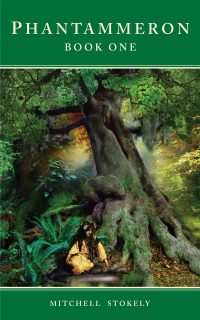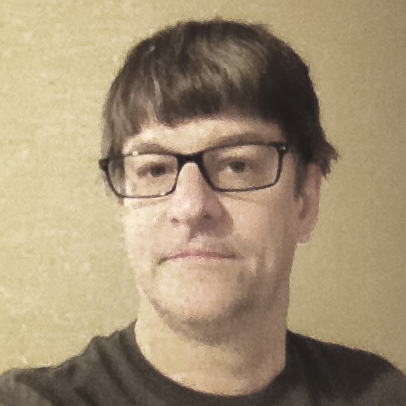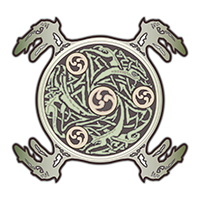In creating the stories for the Phantammeron, I have been intensely focused on building a monstrously complex and detailed mythology for the book. The term used here is Mythopoesis (“myth-making”). From the beginning, I have been fascinated by the idea of artificial imaginary worlds, and assembling gigantic psuedo-historical backgrounds for them and the characters that inhabit them. There has never appeared anything like this in today’s literature, save a few novels here and there, which include C.S Lewis, Lord Dunsany, and of course Christopher Tolkien’s The Silmarillion.
Where is Myth-Making Today?
It may be I have not delved deep enough into the current literature, but there doesn’t appear much in this realm of writing on the near horizon either, at least not of any real depth and meaning, save in the modern role-playing gaming arena. Even then, it’s filled with half-baked attempts using highly masculine war realms, or feminine dark romantic tales nauseatingly filled with troubled relationships with very little investment in any deep and meaningful mytho-poetic art form. Romance and sword fighting….thats it!
Often times, I feel, modern writers fail at this type of writing simply because they fail to invest the time to build a suitable framework on which to support their own shallow pseudo-world histories and characters. Or, they simply fail to pour a solid enough foundation suitable to support the much larger fantasy worlds they use later as the basis for their more complex plots. Even then, there appears to be zero understanding and zero effort put into discovering the true meaning of the ancient stories found in our own mythologies; the ancient cultural narratives of oiur ancestors that fill our libraries today. I almost feel like kids today have simply lost the meaning of myth, having failed to really read and study the text. What we see today on motion picture screens and in games and novels and fantasy as a whole seems all but gutted of any depth or meaning, much less good story-telling skill….its all about either love affairs, sex, beauty, or societal status. The rich win, the prettiest win, the one with the most dangerous boyfriend wins. Nothing in any of that has anything whatsoever to do with mythology or meaning, much less good story-telling. Isnt that the purpose of telling a story at all?
The things we seem to care about in our stories are simply modern-day struggles to conform and find love in a very competitive, confined, modern society that is itself bereft of meaning and stupefied by Hollywood starlets, affairs, drug-addicted entertainers, the uber-rich, and our much worshiped womanizing athletes. No wonder we have nothing to say! I say…..just go read one of Grimm’s Fairytales. One story has more depth and meaning than the biggest Hollywood blockbuster today! Sad but true. (I keep telling myself, Hubris begets Nemesis here….and I’m certain that I am guilty of being a bit naïve about much of the writing being done today. But, I am still searching for someone who, one day in literature, will prove to me the art of Mythopoeia is not dead).
And so, maybe I’m also a bit strung out on this concept from years of creating worlds like this in various role-playing games I played myself with my school buddies as a youth in high school. I certainly portrayed myth in my own shallow self-serving way as a youth, having almost no idea what the heck I was doing. But in later years, I did go back and read the actual stories, Hamiltons Greek Mythology, the Prose Eddas, Wagner’s Ring Cycle, the Celtic mythologies, the Faery tales, the Kalevala, Gaelic text, the Welsh Mabinogion, the Historical Arthur, and other items of ancient literature. I was amazed at how BEAUTIFUL and moving these stories were in their ancient forms. Sure, much has been rewritten and reworked over the years. But the wellspring of my imagination began with reading and trying to understand Mythology. It was finally reading these old sources from the library that allowed my mind to really get a sense for how powerful story-telling could truly be! It also gave me the idea of how emotional and deep character development could be. Even the concept of Love was reborn in my heart and mind from reading many of the ancient stories; for example the tale of Tristram and Iseult, or the immortal concept of the “love triangle” and its deep mystical connection to cyclical and seasonal cosmological myths. These helped me to connect the true meaning of these love tales. They were not about some shallow relationship between confused teenagers but a deeper relationship of the characters to each other via the land, the seasons, their society, and their place in an overall dark and tragic cosmological landscape and history. Such a love often asked that a character sacrifice oneself, so that the reader could truly understand the meaning and consequences of that love beyond the meaning of formal sexual relationships or familial love (unlike today’s writers where Love is “all about me”). Relationships in these ancient stories often were a means to an end….not the end.
But, there is something important that needs to be said about the dearth of solid fantasy writing, and with what appears to be a lost art form in and of itself; the art of writing great Mythopoeia. It means we are on the cusp of losing a connection to our primitive and very human side by not understanding the importance of myth and writing our own artificial mythologies. We just may be consumed and spit out (rather than tasted and savored) our own cultural Indo-European identity all in the name of capitalism (the need to make money selling ideas that sell books and movies). I don’t want to rant and rave here on the subject. But I do think, after reading so much about myth myself, and hearing Joseph Campbell talk about it, and historians delve into it, we are losing a connection to it. Yet, I have hope we can regain some connection to the art of powerful and meaningful story-telling by starting to write more Mythopoeia in our writing and our movies. Again, if we write more deep and meaningful myths and character deveoplment based on myths and larger histories in our books, we have a chance to regain a lost art form and move others by our tales.
Trust me when I tell you…..the books are there, gathering dust at your local library. The meaning and the imagination in works, like the Norse Prose Eddas, or Greek Mythology, or the Rig Veda…..its all there. But it is up to us to once again, challenge ourselves to find the meaning in the stories. It is up to us to invest the time and energy and fill our stories again with archetypes derived from this ancient literature; archetypes that our ancestors used in their stories to trigger deep spiritual triggers in our subconscious that moved us to fight for a cause, find meaning in our lives, connect us to the Gods, and to embrace even our own death via the wonderful tales of the “other world” and the afterlife and the world of the dead. Even love, as a very real and spiritual connection to another human being, was not seen as an end, but a means to deliver up a characters placement in a greater story with a greater purpose and meaning that transcended even that love. We all gather around us those we love and who love us but in the end, we have a destiny and a fight we must fight alone against impossible odds. The ancient druids and the story-tellers knew life was about many things and many complex facts beyond our own pitiful desires, hopes, and dreams. The mythology and the art of story-telling and of the fabric of the overall cosmos was a vital part of helping to lay out the destiny of every person in it. It was a grand play meant to be played out on a grand stage for all the world to see. Youth, Love, Hope, Beauty, Truth, Bravery….its was all there. Yet, our ancestors could only feel that we were but a small part of a much bigger play when our part of that play was finally revealed to us through story-telling and myth.
This is why, the Phantammeron and the bigger story that I am designing for it, in the form of a rich Mythopoeia, will have a purpose in shaping the lives of characters that come later in the book, and as such, is such a huge and important undertaking for me as a writer. Many of my greatest stories in the book derive from a much larger plot and story that extends way earlier than even the most ancient of characters. These characters include, for example, the Giant Skatha and his children, Fey-Bala the dark fallen angel, Manogan the freer of Menn, Govannon who forged Ginnikar for his personal vengeance, and the lives of the dozens of characters that live and fall in the stories surrounding the Children of Shining. My story has a bigger, more tragic tale to be told. Yet within it are the small victories achieved by the heroes that fight against it. As I shape the larger mythologies they will fit like a puzzle into a much larger plot, yet remain entangled, like vines might seem, enmeshed and wound tight around each other. Like Celtic knots, they wrap back around to the one central mythology that will form the basis for the book. This is the art of story-telling I hope my readers will appreciate, one that the Druids and the Sages left us in the ancient stories handed down to us in ancient texts and manuscripts. Some of my stories are loose strands like many of the Gaelic tales appear to be. Yet others play out very well in the grander scheme in which the Gods are at war with Beast and Man for dominion over all and deliverance from darker forces. For example, in the Phantammeron, there is the Gomericon or Creation Story, the Fey-Levelor or Fall of the Children of Shining, and Amanakra or Birth of the World, which contains the tragic death and sacrifice of the Father, Aman. (It’s Aman’s death that forms the world and the flesh of whom gives birth to the earthly but sacred dreamland realm of Adda, the shining continent of Galaia and the fallen evil dark world of Ermann.) The Mythopoeia is at play in the Phantammeron in full force. It is based on my own feelings about the art form itself, and about the Indo-European mythology of my ancestors, much of which has shown me “the way”. But, all this for waiting for you too, and is sitting there in your local library, on dark and dormant bookshelves or in the basement of libraries and archives, waiting for you to discover.
I am so excited for the book, as I know you will understand it’s purpose and my own feelings about this subject once you have read it. But for now, I have to get back to my manuscripts. There is so much that needs to be done and many miles to go before I sleep……goodnight for now.
EM



